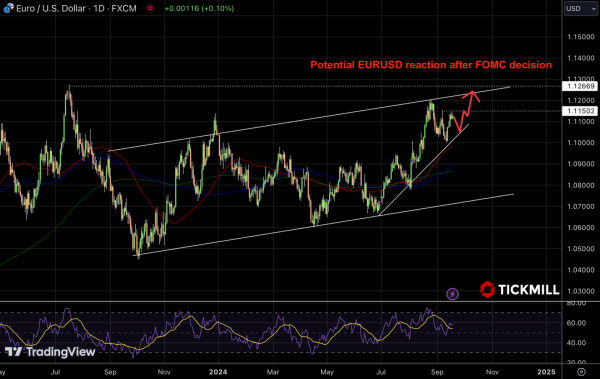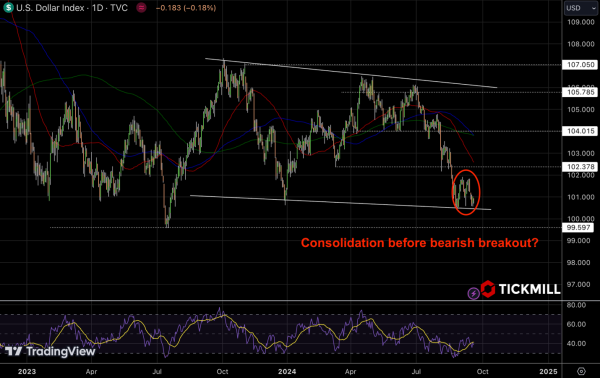EUR/USD Holds Above 1.1100 Ahead of Fed Decision
As we approach the Federal Reserve's highly anticipated policy announcement today, the EUR/USD pair is steadying above the 1.1100 level during Wednesday’s European session. This stability comes despite the Euro underperforming against other major currencies, a reflection of growing uncertainties surrounding the European Central Bank's future interest rate path and the overall economic performance of the Eurozone:

The Euro's recent weakness can be attributed to a lack of consensus among ECB officials regarding monetary policy. On one side, ECB Governing Council member and Bank of France President François Villeroy de Galhau has been advocating for additional rate cuts. He warns that without further easing, there's a significant risk of inflation remaining too low, which could stifle economic growth and keep the Eurozone trapped in a low-inflation environment. Villeroy's comments suggest that the ECB might continue to cut rates to achieve its inflation targets.
Contrastingly, another ECB Governing Council member, Peter Kazimir, has urged caution. In a recent blog post, he emphasized the importance of waiting until December for a clearer economic picture before making further policy moves. Kazimir cautioned that policymakers might regret rushing to cut borrowing costs before ensuring that inflation has been sustainably defeated. This division within the ECB creates uncertainty, leaving investors to speculate about the timing and magnitude of future rate adjustments.
Market participants widely expect the ECB to implement one more interest rate cut before the year ends, potentially in October or December. This expectation contributes to the Euro's vulnerability, as prolonged low interest rates can diminish the currency's appeal to investors seeking higher yields.
Adding to the Euro's challenges is the upcoming release of the Harmonized Index of Consumer Prices for August by Eurostat. Economists forecast that the inflation figures will align with preliminary estimates, with annual headline inflation at 2.2% and core inflation at 2.8%. Should the data deviate from expectations, particularly to the downside, it could bolster the case for further monetary easing by the ECB and introduce additional volatility to the EUR/USD pair.
On the other side of the equation, the US dollar index, which measures the Greenback against a basket of six major currencies, is struggling to maintain its rebound near the 101.00 level. This is happening despite better-than-expected US Retail Sales data for August, which typically would strengthen the dollar. The market's focus, however, is on the Federal Reserve's policy outlook:

Confidence is growing among traders that the Fed will commence an aggressive policy-easing cycle. This sentiment is fueled by officials expressing concerns over a slowdown in job growth and a belief that inflation is declining toward the central bank's 2% target. According to the interest rate futures, there's a 63% probability that the Fed will cut interest rates by 50 basis points to a range of 4.75%-5.00%, while the remaining 37% favor a 25-basis point cut.
The Fed's decision will not only impact the immediate direction of the US dollar but also set expectations for future monetary policy. Traders should pay close attention to the Fed's dot plot and economic projections, which provide insights into policymakers' expectations for interest rates, inflation, and economic growth over the medium and long term. Additionally, Fed Chair Jerome Powell's press conference will be critical for gauging the Fed's stance on monetary policy moving forward.